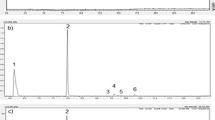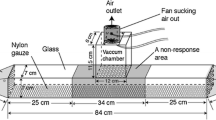Abstract.
The distinctive odour of the seven-spot ladybird beetle, Coccinella septempunctata, had not previously been identified unequivocally, although it was considered likely to arise from olfactorily potent pyrazines. The component responsible was located by human organoleptic evaluation of the gas chromatography effluent from ladybird volatiles and was fully characterized as 2-isopropyl-3-methoxypyrazine. Although insects may not be expected to have similar olfactory sensitivities to human beings, this compound was found to fulfil a pheromonal role in the attraction between adult C. septempunctata, typical of many ladybird species. Thus, in a behavioural assay, both males and females were attracted by amounts of this pyrazine equivalent to the ladybird volatiles.
Similar content being viewed by others
Author information
Authors and Affiliations
Additional information
Received 6 May 1998; accepted 2 June 1998
Rights and permissions
About this article
Cite this article
Al Abassi, S., Birkett, M., Pettersson, J. et al. Ladybird beetle odour identified and found to be responsible for attraction between adults. CMLS, Cell. Mol. Life Sci. 54, 876–879 (1998). https://doi.org/10.1007/s000180050215
Issue Date:
DOI: https://doi.org/10.1007/s000180050215




